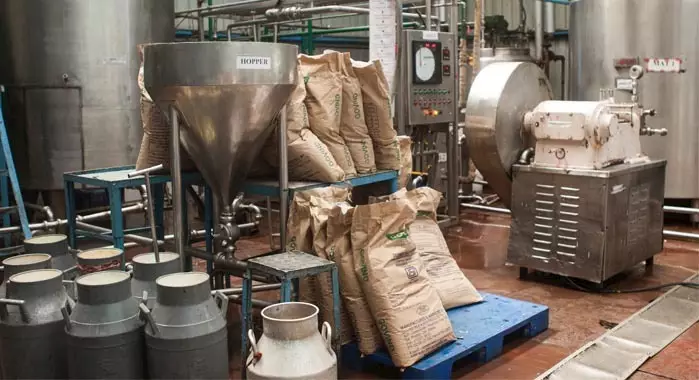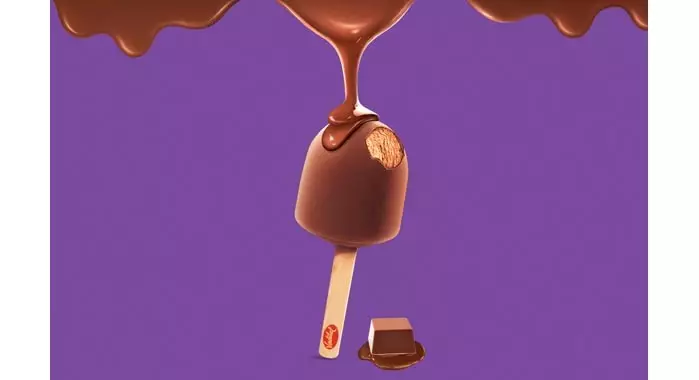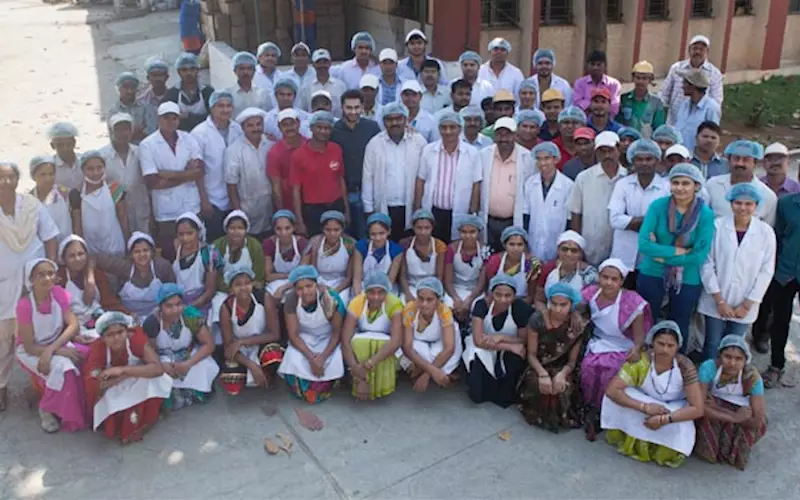In a country of 1.3 billion ice cream experts
Rahil Gandhi, director at Vadilal Dairy International tells the WhatPackaging? team about the difference packaging has made in the 4.5 lakh tonnes ice creams and frozen foods market
09 Mar 2018 | By Ramu Ramanathan

Rahil Gandhi, director at Vadilal Dairy
The USD 1.5-billion domestic ice cream industry is serious business. And the popular homegrown brands that are family-led stands at the crossroads of change. As I trudge through Christain Wadi which is a hundred-year-old basti in Vile Parle, I come across ice creams manufactured in a homegrown sancha. This is the world of the unbranded and the unpackaged with strong dose of nostalgia. This is the world of folklore of Bhavnagari Nagars who consumed buckets of ice cream for breakfast, for lunch, and for dinner. All other food item was banished.
On the other end of the spectrum is the 4.5 lakh tonnes of ice creams and frozen foods jostling for retail space from kirana stores in your neighbourhood to the malls and theatres.
It is this willingness to buy branded products plus a preference to experiment with new flavours that Rahil Gandhi, director at Vadilal Dairy International is eyeing in his spartan cubicle in Vile Parle with a window that overlooks a bustling crossroad. The stats are impressive. The 30-year-old, the fourth generation, among Gandhis is keen to roll out, "new variants as well as recipes and look for 100-150 distributors for covering 15,000 outlets across the area."
All this is part of the 40%-50% growth plan in the next five years. For this, Vadilal will leverage 40 flavours which are sold in a variety of 180 packs and forms.
The ice cream expert
During my time in the Vadilal office, Rahil Gandhi indulges my enthusiasm for ice creams. Everything is served on a platter. Cones, candies, bars, ice-lollies, small cups, big cups, family packs, and economy packs.
But making ice creams is no simple thing. Rahil Gandhi says, "I have people coming up to me and telling why don't you try chocolate chip with a peppermint tinge or why don't you mix a chikoo with a gulkand and paan flavour. Everyone is very vociferous. I listen to all advise. But it is not as though my team and I are sitting here and doing nothing."
I ask him, so everybody in our country is and expert in ice cream?
He laughs it off. "Not only ice cream. I think we are a nation of 1.3 billion experts about movies, politics, cricket. People don't understand we manufacture ice creams on a day-to-day basis. People don't realise making ice creams is a science."
Is it tough, I ask him, to be bombarded by all this tendentious gyaan?
"Oh yes, ice creams are a totally fun thing, and the way the Indian market is booming, we are in a fun place," Rahil says. He mentions, "His grandfather once told me that, no matter where he went in the world, whenever he saw an ice cream, he knew he was in the centre of human civilisation."

From cow to cone
Things are not as innocent as they were a decade ago.
Rahil Gandhi says, "During the early 1990s and mid 90s up to 2000 we used to have a party pack with brand logo. Then there was a stamp which said this is a Kesar Pista or a Vanilla. There was no differentiation. Just this stamp and MRP and manufactured date. Today, as the industry is developing, there is a specialised flavour plus a specialised pack for each party pack flavour. The butterscotch flavour has a distinct butterscotch pack, likewise each segment, from candies to brick ice creams needs a special packaging tweak.
And in this sense, Rahil seems to be the man for the job.
A mechanical engineering graduate from Mumbai University, he invested his time at the Penn State’s Ice Cream Short Course, which the college's website states is, "one of the oldest and best-known educational program that deals with the science and technology of ice cream." Plus he has undergone a training programme in 2013-14 at M-C Dairy in Toronto in cheese making, where he "broadened his horizons and gain hands-on experience in various cheese variants like Camembert, Cheddar, Cottage, Feta, Cream Cheese etc., including yoghurt and frozen foods as well."
Ever since his return, two years ago, he has been pouring his energy into Vadilal. Besides the fundamentals and nuances of commercial ice cream manufacture, he has been looking at production, quality control, and research and development trends. basically, "everything from the cow to the cone".
Today, the business has expanded to Andhra Pradesh, Telangana, Karnataka, Maharashtra, Goa and Kerala, where Vadilal Dairy International has got territorial rights.

Vadilal's one of the most selling ice creams - Tik Tok
The Rs 5 ice cream
While the growth rate in the premium segment is higher, the size is small. Which is why, Vadilal has a big thrust on the Rs 5 product which was launched in the 1990s. This, as Rahil says is cheaper than a cup of tea. Plus it is a very lucrative proposition for the millennials and new customers who can purchase an ice cream in any of the 15,000 outlets.
As a result, "This is one of the ice cream products which comprises 10 to 12% of our sales." And it's quite a paisa vasool item. With a chocolate crust and a dollop of ice cream on the inside, it is the size of biggish lollipop.
Rahil re-invented this item. "I was rummaging through the QC lab and they had samples of our older products. I came across a very interesting name Tik Tok. I thought to myself what a catchy name."
In those days, Vadidal this ice cream was handmade. Now the process is automated. But the issue was with the packaging. The consumers liked the product but didn’t like the packaging. Rahil says, "The product was served loose. Plus there were issues with damages." This meant, the demand dipped.
Rahil Gandhi explains, "The local retail store stopped placing orders. This is a Rs 5 product and the margins aren't high in terms of the profits they make per piece. If they sell 20 pieces and damage one piece if it is cracked or the stick has fallen, it is not acceptable." That's how the switch was made to a BOPP pouch package.
And there was no looking back. It was a huge hit in the market. From 2%, this item became 12% of our total sales. Rahil says, That’s the difference, proper packaging has brought."
In addition there were savings on the production shopfloor. Plus there is the cool quotient among youngsters who want to quench their thirst. And the fact that those the Rs 5 stick is the ideal size for those who cannot consume excess sugar.
The choco bar package
Packaging scored an ace with the Choco Bar. There was lot of murmurings in the market. Mainly because of the damage during transit. Rahil explains, "The ice creams were manufactured in our Boisar factory. We had to supply it to Hyderabad or Nagpur. This means a transit time of 15-16 hours. With stops and such, this would be 20-24 hours. The ice cream underwent a lot of temperature upheavals due to powercuts." Rahil explains there are lots of shutdown during summer. "Now imagine a freezer which is shut for 7-8 hours. This ruins the structure of the ice cream totally."
Rahil explains, "Now we supply the Choco Bars in a box. The retailers believe this serves as a protective layer for the ice cream, especially as there is a lot of manhandling in India at the site and from the vehicle to the retailer and then to the distributor."
The other big change was supplying the ice cream in a BOPP format. About 20 ice creams per box. This has resulted in a mindset shift. Besides making the ice cream pack, look glossy and groovy.
The BOPP is tensilised, thermoweldable with a thickness from 15 to 35 µm. Vadilal uses components of laminates, together with transparent polypropylene films or polyethylene (PE), occasionally as monofilms. Besides less weight and being tamper-proof, the BOPP ensures high protection barrier against the influence of light or oxygen.
Packaging power
Vadilal has approximately 25-30% fast moving flavours. And in this day and age of 24/7 connectivity, the packaging has to be perfect. One cannot afford failures, says Rahil.
He explains, "Vadilal has to supply everything. A retailer may sell hundred tonnes of vanilla. Suddenly, he will demand mello jello or kesar pista. You have to monitor the consumption and understand the flavour preference. If there is a new flavour, then you need to create a product, quickly. Plus you need to look at what works. Change the architecture of the packaging, the substrate, the grammage. Sometimes we change the design and re-launch a "flop" product which did not work with the older packaging."
Plus the ice cream has to perform whatever the power situation of the country is. Having said that, Rahil is confident of a high double-digit retail for the next few years. He says, the cold chain infra on the up, it has meant fewer negatives.
Rahil and his team have demonstrated entrepreneurial traits by setting up distributor network and handling the entire supply chain management from procurement to operations to post sales. A time-bound marketing plan was rolled out, which met all marketing and sales objectives of Vadilal. Plus Rahil streamlined the Boisar factory operations by introducing technologies, inducting staff members and providing training to employees for better productivity and enhanced internal control.
He adds, "We look at ice cream packaging abroad. The main question is: How can one incorporate that into packaging in India. Even if one steps into a kirana store in a c-tier town, you are always looking at how one can incorporate ice cream in this environment? The mind is always, ticking."
Rahil’s vision for Vadilal is to gradually change all customised products with new flavours and new product lines, undertake market development with new product placements and to carry out analysis of competitive environs and consumer needs.
Rahil concludes, "All we are doing is, we are taking the ice cream process forward through packing and packaging. Above all, we are standardising the packaging of all our products."
About the founder Vadilal Gandhi
He started selling ice creams in India much before ice creams were an industry here. From selling sodas in 1907, Vadilal has traveled through four generations of Gandhi's. By 1926, the business was launched as a small retail outlet in 1926 by his son Ranchod Lal Gandhi. Having imported ice-cream making machines, Ranchod Lal Gandhi expanded Vadilal's business to four ice-cream shops by 1950s.
Later, Ranchod Lal's sons, Ramchandra and Lakshman, took over Vadilal, leading to its evolution as a modern corporate entity by 1970s with 8-10 ice-cream outlets in Ahmedabad. In the early 1990s, there was a split in the family - with Shailesh Gandhi, brother of Rajesh and son of Ramchandra. Vadilal lead to a split in territories with Shailesh Gandhi went on to own territorial rights for the Vadilal brand in Maharashtra and South India.
Vadilal Dairy International Limited was incepted on 20th July 1987 as a Public Limited and launched in the market in April 1988 by late Laxmanbhai Gandhi, late Ramchandrabhai Gandhi, and Shailesh R.Gandhi, the present Chairman & Managing Director of the Company. Vadilal is now under the dynamic leadership of Rahil Gandhi, the third generation of thought leaders in the ice cream industry, and son of Shailesh Gandhi. The 30-year-old with his leadership skills and expertise has been instrumental in winning the hearts of consumers and driving the growth of the brand.











 See All
See All